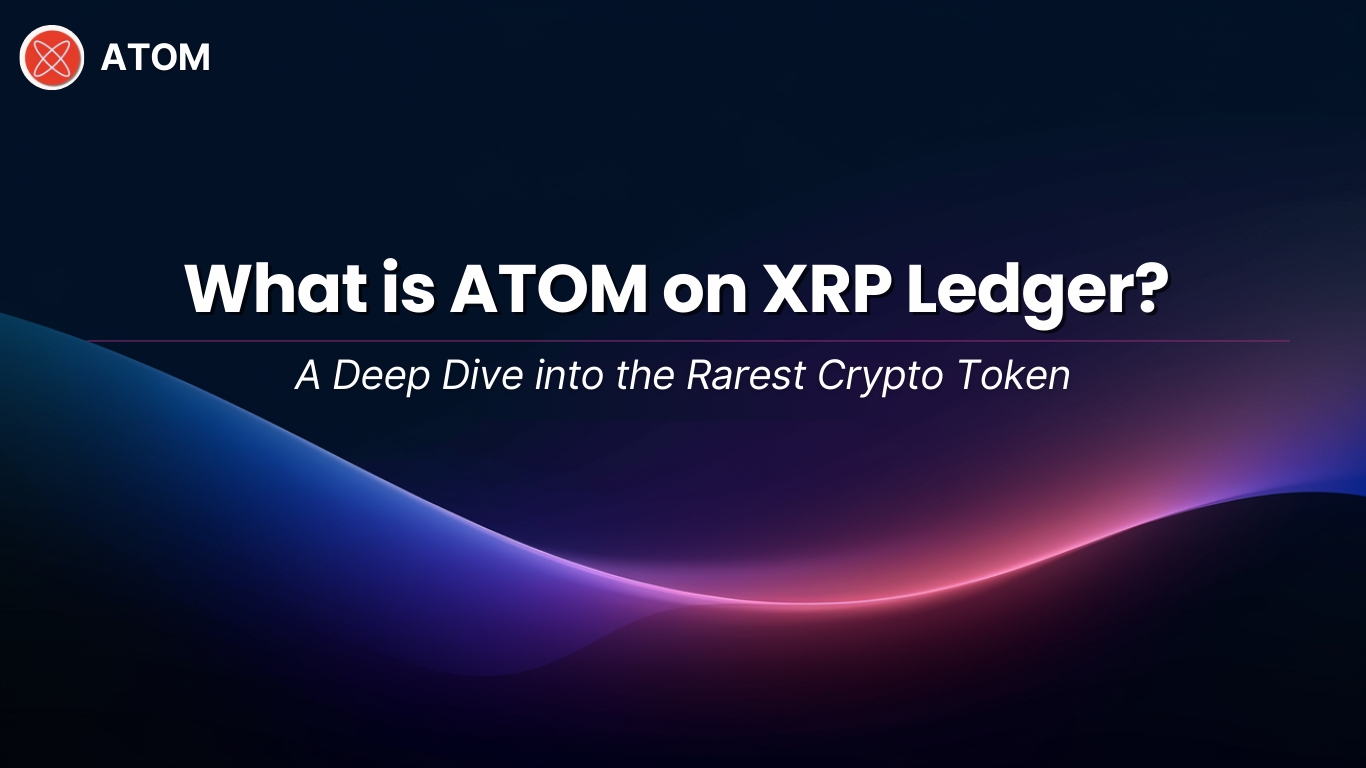From the Blogs
Learn how to grow your business with our expert advice.

What is ATOM on XRP Ledger? A Deep Dive into the Rarest Crypto Token
The cryptocurrency landscape has always been driven by scarcity and demand. Bitcoin’s 21 million supply cap fueled its rise as "digital gold." Deflationary tokens like BNB gained value through continuous burns. But what if there was a token that took scarcity to the extreme—a token so rare that only one exists?
This is ATOM, a groundbreaking experiment on the XRP Ledger (XRPL) designed to test the very nature of value in digital assets. Unlike other tokens, ATOM’s total supply is just 1, making it the rarest asset on XRPL. Every fraction of ATOM carries significance, and its price is dictated entirely by market perception and demand.
ATOM Crypto Token on XRP Ledger: What Makes It Unique?
ATOM is not just another meme coin or speculative asset. It’s a thought experiment wrapped in blockchain technology, exploring how absolute scarcity impacts market behavior. Here’s what sets ATOM apart:
- Total Supply: Just 1 ATOM
- Unlike tokens with billions or even trillions of units, ATOM has a hard supply cap of 1 token.
- This creates an ultra-exclusive market, where even owning 0.000001 ATOM makes a difference.
- Fractional Ownership: The "Sub-Atomic" Concept
- The smallest unit of ATOM is 0.000001 ATOM, called a "sub-atomic" unit.
- Just like Bitcoin’s Satoshis, this fractionality allows more holders to participate.
- Decentralized & Immutable
- ATOM is fully live on the XRP Ledger, ensuring fast transactions with near-zero fees.
- The contract is immutable, meaning no more ATOM can ever be created.
- No Inflation, No Dilution
- Many tokens introduce new supply through minting or staking rewards, but ATOM cannot be inflated.
- What exists today is all there will ever be, making ownership inherently valuable over time.
Why ATOM Matters in a Crowded Crypto Market
With thousands of tokens launching daily, the crypto market is oversaturated. ATOM offers a refreshing alternative by challenging conventional supply models. Instead of relying on hype cycles, meme trends, or token burns, ATOM’s entire value comes from its extreme scarcity.
But why does this matter?
- Exclusivity Creates Demand – The fewer people who can own something, the more valuable it becomes. ATOM is built on this principle.
- It’s a Pure Market Experiment – ATOM isn’t promising staking rewards, utility, or smart contract functionality. It’s a social and financial experiment testing how scarcity drives demand.
- A Store of Digital Scarcity – Bitcoin became valuable due to limited supply. ATOM pushes this concept even further—1 token, no inflation, no dilution.
Where Can You Buy ATOM?
ATOM is available for trading on select XRP Ledger marketplaces, where early adopters are securing their share of this rare asset. Here’s where you can trade ATOM:
- First Ledger (Trade ATOM Here)
- Sologenic (ATOM on Sologenic)
- XMagnetic (Trade ATOM on XMagnetic)
These platforms allow anyone to buy, sell, or hold fractions of ATOM with fast, low-cost transactions powered by XRPL.
The Future of ATOM XRPL: What Comes Next?
ATOM is more than a token—it’s a movement. As more people recognize its unparalleled scarcity, the demand for even sub-atomic fractions is expected to grow. The ATOM community is already expanding, with discussions on governance through LumosDAO, strategic partnerships, and community-led initiatives.
Will ATOM become the most valuable crypto asset ever created? That depends entirely on how the market perceives digital rarity. What’s certain is that ATOM challenges everything we know about crypto supply models.
Conclusion: Is ATOM the Ultimate Scarcity Play?
If Bitcoin proved that digital scarcity creates value, ATOM is taking it to the extreme. With only one token in existence, every fraction holds significance. ATOM is an ongoing experiment, testing how markets react to something truly rare.
For those who believe in scarcity as a driving force in crypto, ATOM represents the ultimate bet. The only question is—how much of ATOM will you own before it’s out of reach?
